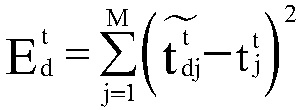Convolutional neural network defogging algorithm based on regional division and heavy fog preprocessing
A convolutional neural network and region division technology, applied in the field of algorithm for dehazing by a method, can solve problems such as inaccurate estimation of transmittance in dense fog areas
- Summary
- Abstract
- Description
- Claims
- Application Information
AI Technical Summary
Problems solved by technology
Method used
Image
Examples
Embodiment Construction
[0057] This patent proposes a convolutional neural network defogging algorithm based on dense and thin fog area division and dense fog area preprocessing. First, the dark channel value of the local image block in the foggy image is extracted and compared with the threshold, and the image block is judged as a dense fog image block or a hazy image block. If it is judged to be a dense fog image block, the image block will be enhanced, and then input into the convolutional neural network, and the transmittance of the image block will be estimated through the convolutional network; if it is a hazy image block, the image block will be extracted. The chromaticity feature map and dark channel feature map of the image block are input to the convolutional neural network to judge the transmittance of the image block. Finally, on the basis of the transmittance value of the image block, the original fog-free image is calculated through the imaging model of the fog image. The specific plan...
PUM
 Login to View More
Login to View More Abstract
Description
Claims
Application Information
 Login to View More
Login to View More - R&D
- Intellectual Property
- Life Sciences
- Materials
- Tech Scout
- Unparalleled Data Quality
- Higher Quality Content
- 60% Fewer Hallucinations
Browse by: Latest US Patents, China's latest patents, Technical Efficacy Thesaurus, Application Domain, Technology Topic, Popular Technical Reports.
© 2025 PatSnap. All rights reserved.Legal|Privacy policy|Modern Slavery Act Transparency Statement|Sitemap|About US| Contact US: help@patsnap.com



